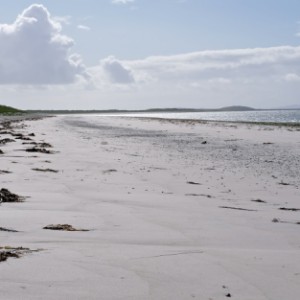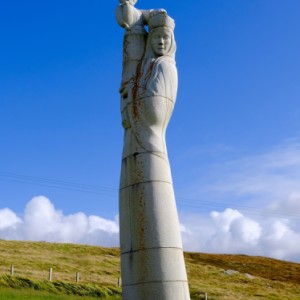Proper housing
So our Neolithic farmers put a lot of effort into making burial cairns, then a few thousand years on we find people creating huge community projects such as stone circles, many examples of which can be found in the Outer Hebrides. It was not until the late Bronze Age/Early Iron Age, around1250 BC that it was thought more sensible to put effort into making better housing. Permanent settlements developed and this was the age of roundhouses.
Roundhouses were built with a low stone wall and a timber roof covered with a thick reed thatch and the floors were sunk below ground level. This is all that is visible now of what is believed to have been a terrace of at least seven such houses. This is Cladh Hallan on the West coast of South Uist, amongst the sand dunes close to the sea. There has been much excavation carried out here. The houses were found to have specific areas – a section for industry, such as leatherwork or weaving, a raised area for sleeping. There is evidence that this was a settlement that lasted several hundred years. Not a lot is to be seen now as it has all been covered over, but it is quite awesome to think of the lives lived here so long ago.
A lovely day as we wandered through Benbecula and into South Uist.
We followed the track past the roundhouses to the sea (extra1) and walked along a sandy beach – a pity it was so crowded!
We called in at another of our favourite Smokehouses and bought smoked salmon and smoked haddock. I think that sets us up for the rest of the week.
We stopped at the Kildonan Centre with its good café and a museum, which over the winter has had a complete refurbishment and is now very different from when we have been previously – impressive.
And we visited the very lovely Our Lady of the Isles, carved from granite and erected in 1957 to guard the island of South Uist against any ill effects from the nearby Royal Marine base. (Extra 2)



Comments
Sign in or get an account to comment.


